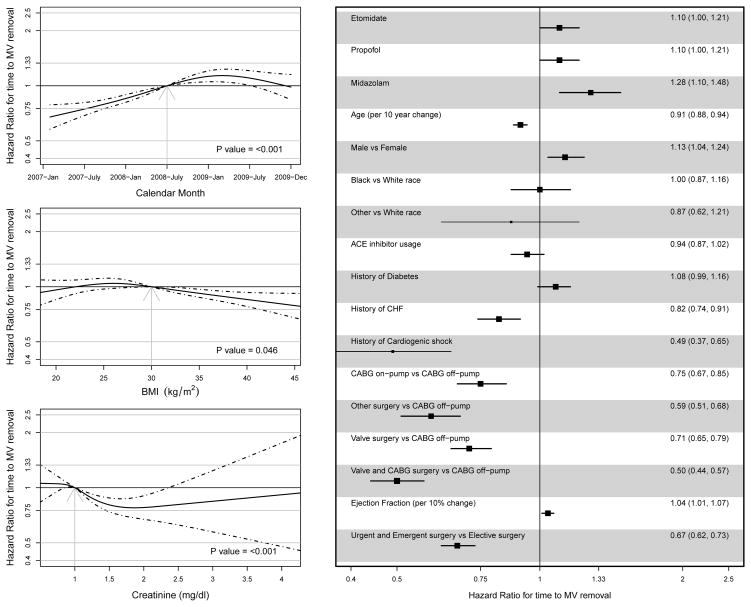Fig. 2.
Time to Mechanical Ventilation (MV) Removal Regression Analysis: Results are based on a multivariable Cox proportional hazards model, and hazard ratios (HR) and 95% confidence intervals summarize the relative rates at which MV was removed. Calendar month, body mass index (BMI) and creatinine concentration were entered into the regression model flexibly using restricted cubic splines with four knots. To display effects sizes for the nonlinear effects, we chose a single reference value for each variable (calendar month = July 2008, BMI = 30 kg/m2, creatinine concentration = 1 mg/dl) and compared all other values to it. Due to lack of evidence suggesting a nonlinear relationship with any of the outcomes, the other continuous variables (age and ejection fraction) were modeled with linear terms and are included on the right with categorical variables. Categorical variable effects characterize the adjusted association between the outcome and the presence (vs. absence) of the risk factor. Note that HR greater than (less than) one implies shorter (longer) time on MV. ACE = angiotensin-converting enzyme; CABG = coronary artery bypass graft; CHF = congestive heart failure.

